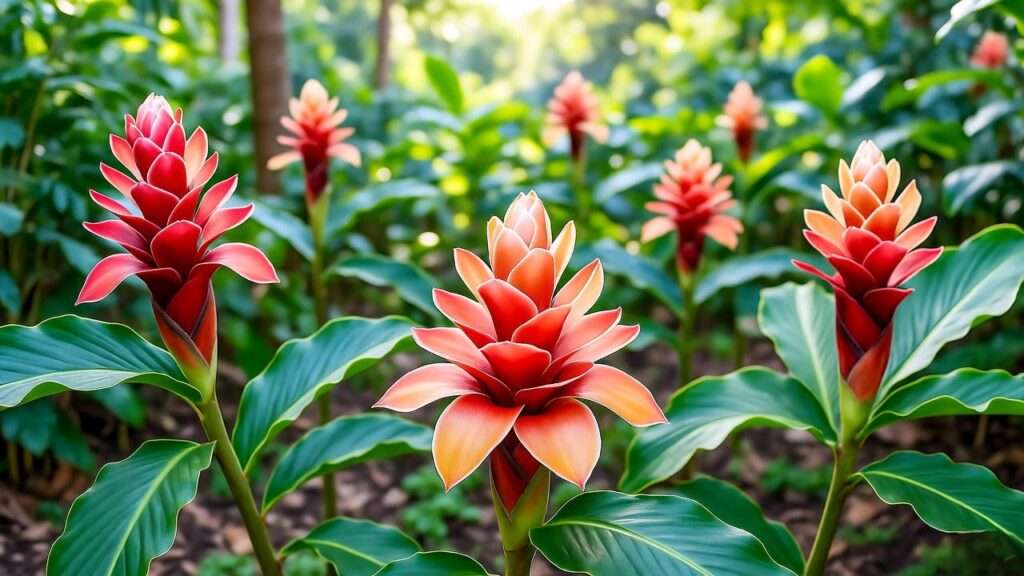Imagine a plant so striking it transforms your garden or living room into a tropical paradise with its twisting, spiral stems and vibrant blooms. That’s the spiral ginger plant (Costus spp.), a showstopper that’s capturing the hearts of plant enthusiasts everywhere. Whether you’re a seasoned gardener or a houseplant newbie, mastering spiral ginger plant care can elevate your space with lush, exotic beauty. But how do you keep this tropical gem thriving? In this comprehensive guide, I’ll share seven expert-backed tips to ensure your spiral ginger flourishes, drawing on my 15 years as a horticulturist specializing in tropical plants. From watering to pest control, you’ll find everything you need to grow a healthy, vibrant Costus, backed by insights from trusted sources like the Missouri Botanical Garden. Ready to dive into the world of spiral ginger? Let’s get started! 🌞
H2: What Is the Spiral Ginger Plant? An Overview 🌿
H3: Botanical Background and Unique Features
The spiral ginger plant, scientifically known as Costus, belongs to the Costaceae family and hails from tropical regions like Central and South America, Africa, and Southeast Asia. Unlike true gingers (Zingiberaceae), Costus stands out with its signature spiral stems, which twist elegantly as they grow, earning it nicknames like “twisted ginger” or “corkscrew ginger.” Its lush, glossy leaves and vibrant, cone-like flower heads—often in shades of red, pink, or white—make it a favorite for ornamental gardening. Popular varieties like Costus barbatus (red tower ginger) and Costus speciosus (crepe ginger) offer unique aesthetics, with blooms that attract pollinators like bees and butterflies. 🌸 According to the Royal Horticultural Society, spiral gingers are prized for their architectural form, adding drama to any garden or indoor space.
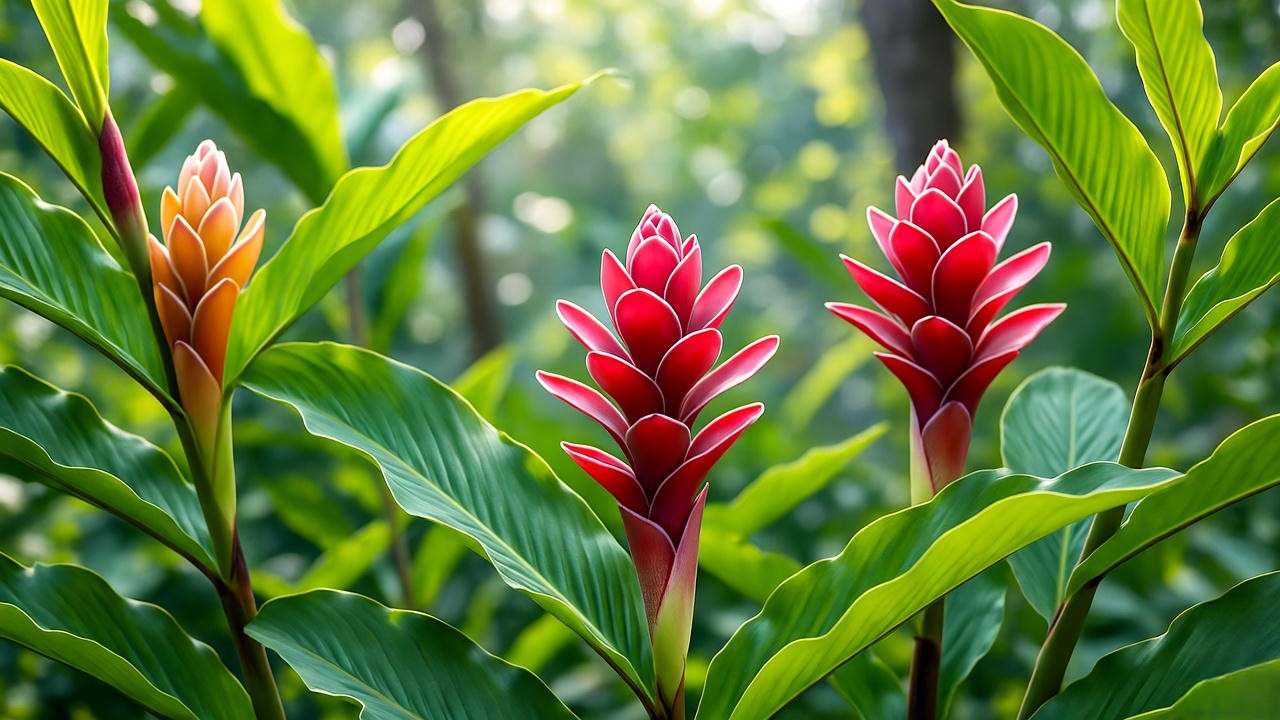
H3: Benefits of Growing Spiral Ginger
Why choose a spiral ginger plant? Beyond its stunning looks, it’s surprisingly adaptable. It thrives in shaded areas, making it ideal for low-light gardens or indoor corners. As a houseplant, it can improve air quality by increasing humidity, a perk noted in studies from the University of Georgia’s horticulture department. Outdoors, it serves as a focal point in tropical or subtropical landscapes, pairing beautifully with ferns or palms. Plus, its low-maintenance nature (with proper care) makes it accessible for beginners and experts alike. Whether you’re creating a jungle-inspired patio or a cozy indoor oasis, the spiral ginger delivers both beauty and functionality. 🌴
H2: Understanding the Needs of Your Spiral Ginger Plant 🌞
H3: Ideal Growing Conditions
To keep your spiral ginger plant thriving, mimic its native tropical environment. It prefers bright, indirect light—think filtered sunlight through a canopy or a spot near an east-facing window. Direct sun can scorch its leaves, while too little light causes leggy growth. Temperature-wise, aim for 65–85°F (18–29°C), as Costus is sensitive to cold. If you’re in USDA hardiness zones 9–11, it can grow outdoors year-round; otherwise, bring it indoors during winter. Humidity is key—50% or higher is ideal, as low humidity leads to crispy leaf edges. A hygrometer can help monitor levels, especially indoors. 🌡️ For outdoor plants, choose a sheltered spot to protect from strong winds, which can damage the delicate stems.
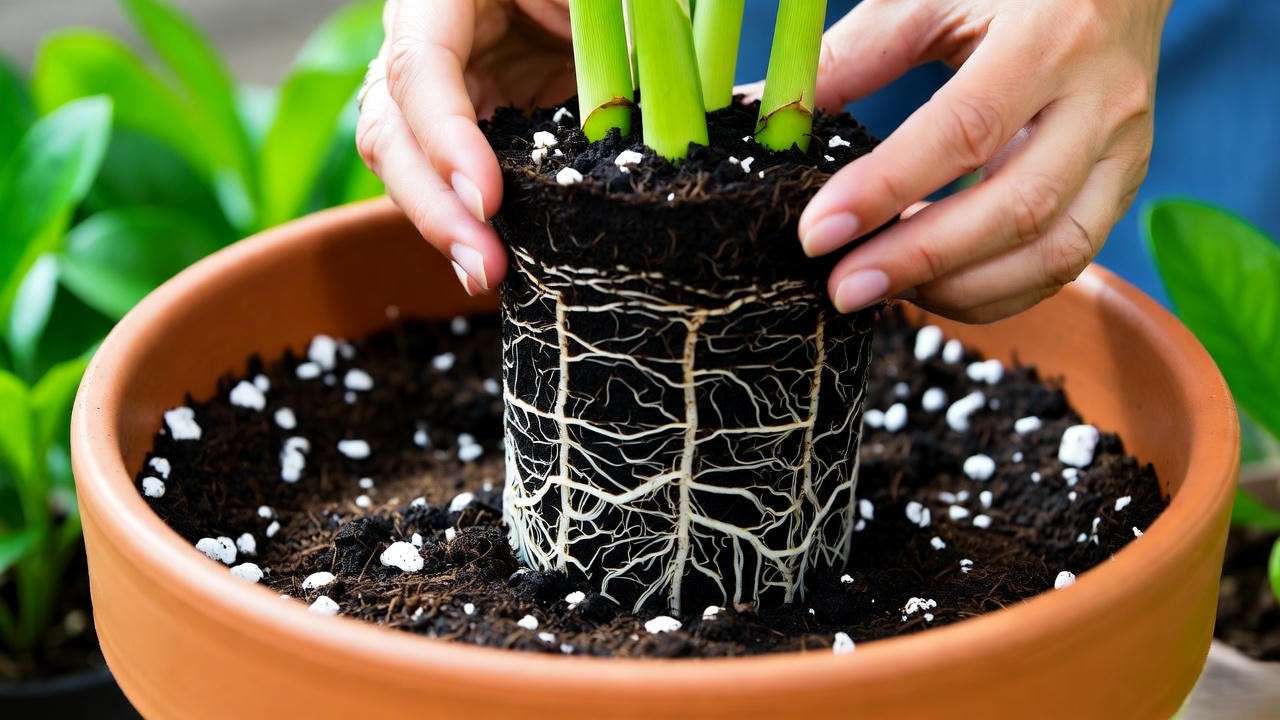
H3: Soil and Potting Requirements
Spiral ginger demands well-draining, organic-rich soil to prevent root rot. A mix of peat moss, perlite, and compost works wonders, providing aeration and nutrients. For potted plants, choose a container with drainage holes—terracotta is great for breathability, but plastic works if you’re careful with watering. A pot 12–16 inches in diameter suits most young plants, allowing room for rhizome growth. Repot every 1–2 years to refresh the soil and prevent root-bound stress. Pro tip: Add a layer of mulch (like bark or coconut coir) to outdoor plants to retain moisture and mimic their natural forest floor habitat. 🌱
H2: 7 Essential Tips for Spiral Ginger Plant Care 🌿
H3: Tip 1: Master Watering for Optimal Growth 💧
Watering is the cornerstone of spiral ginger plant care. Keep the soil consistently moist but not soggy—think of a wrung-out sponge. In spring and summer, water every 5–7 days, checking the top inch of soil for dryness. In fall and winter, reduce to every 10–14 days, as the plant’s growth slows. Overwatering is a common mistake, leading to yellowing leaves or root rot, while underwatering causes wilting or browning tips. Use room-temperature water to avoid shocking the roots, and ensure excess water drains freely. If you’re unsure, a moisture meter can take the guesswork out of watering. 🚰 Example: A client of mine saved her drooping Costus speciosus by adjusting to a weekly watering routine and improving drainage with a perlite-heavy soil mix.
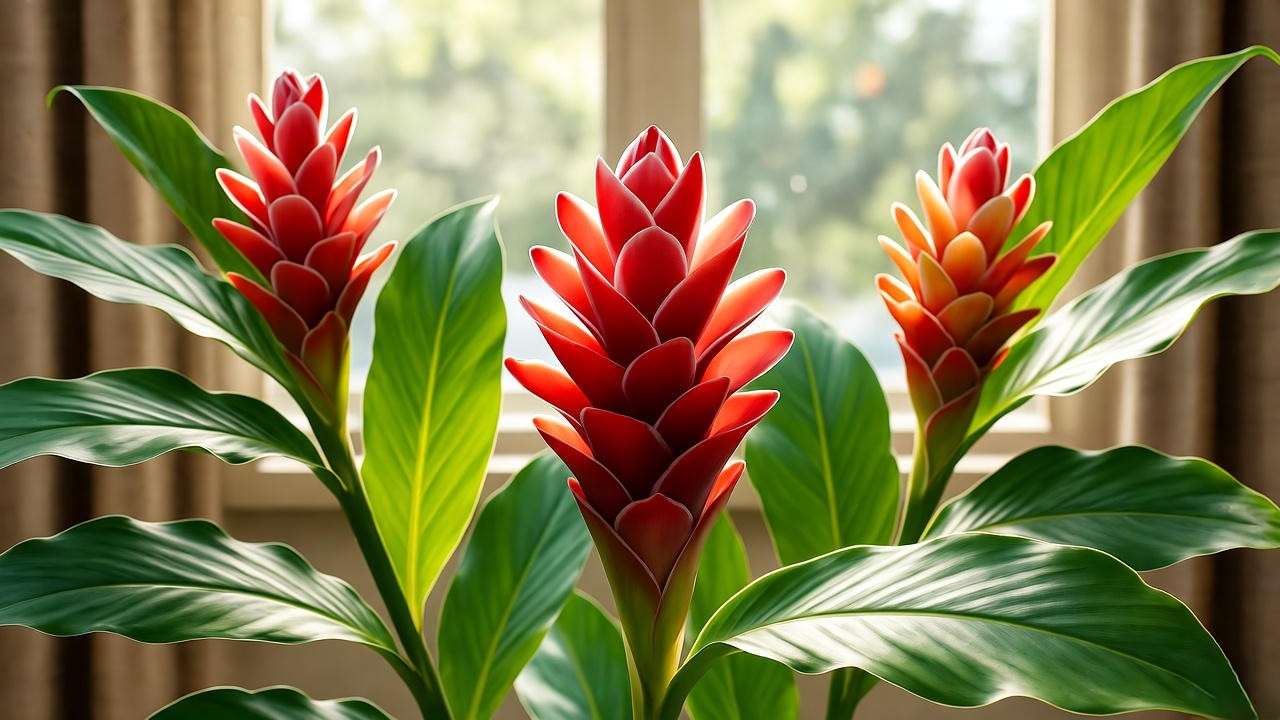
H3: Tip 2: Provide the Right Light Balance ☀️
Light is critical for a vibrant spiral ginger. Aim for bright, indirect light to mimic its natural understory habitat. Indoors, place it near a window with sheer curtains or in a well-lit room with fluorescent grow lights (6500K spectrum). Outdoors, choose a spot with dappled shade, like under a tree canopy. Too much direct sun causes leaf burn (brown, crispy edges), while insufficient light leads to leggy stems or faded foliage. If your plant looks stretched or lacks blooms, move it to a brighter spot gradually to avoid shock. 🌞 Troubleshooting tip: If leaves fade, try rotating the pot weekly to ensure even light exposure.
H3: Tip 3: Maintain High Humidity for Tropical Vibes 💦
As a tropical native, spiral ginger thrives in high humidity (50–70%). Low humidity causes leaf curling or browning, especially in dry climates or heated homes. Boost humidity with a humidifier (aim for 60% humidity) or place the pot on a pebble tray filled with water (ensure the pot base stays above the waterline). Misting the leaves every 2–3 days can help, but don’t rely on it alone. For a budget-friendly hack, group your spiral ginger with other humidity-loving plants like calatheas or ferns to create a microclimate. 🌬️ Pro tip: In bathrooms with natural light, spiral ginger thrives thanks to steam from showers.
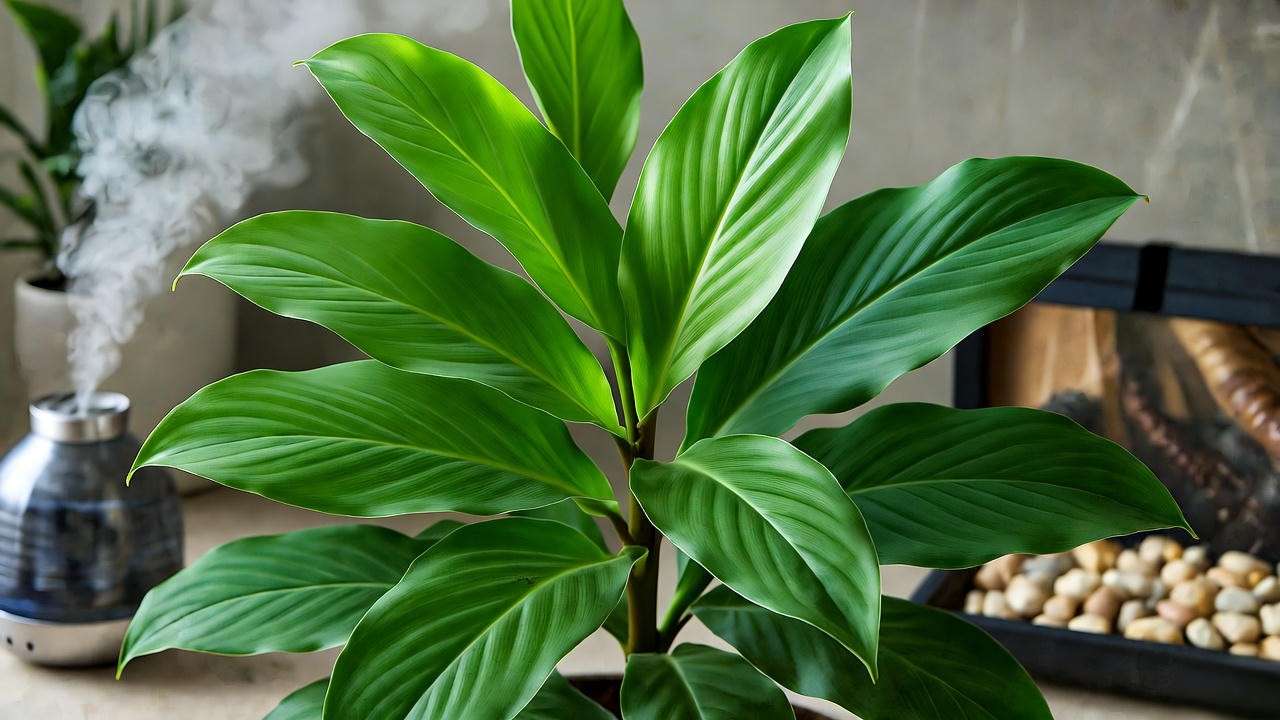
H3: Tip 4: Fertilize for Vibrant Blooms 🌸
To fuel those stunning blooms, fertilize your spiral ginger monthly during the growing season (spring to summer). Use a balanced, water-soluble fertilizer (e.g., 10-10-10 or 20-20-20) diluted to half strength to avoid root burn. Organic options like fish emulsion or compost tea are excellent for eco-conscious gardeners. Apply after watering to ensure even distribution. Over-fertilizing can cause leaf tip burn or excessive foliage at the expense of flowers, so stick to the schedule. In fall and winter, pause fertilizing as the plant rests. 🌿 Expert insight: Dr. Maria Lopez from the University of Florida’s tropical plant research program recommends liquid seaweed fertilizer for boosting bloom vibrancy in Costus barbatus.
H3: Tip 5: Prune and Maintain for Healthy Growth ✂️
Pruning keeps your spiral ginger plant looking tidy and encourages vigorous growth. Remove dead or yellowing leaves at the base using clean, sharp pruning shears to prevent disease spread. Spent flower heads can be snipped off to redirect energy to new blooms or foliage. Prune sparingly—focus on damaged or overcrowded stems to maintain the plant’s natural shape. For indoor plants, wipe leaves with a damp cloth to remove dust, improving photosynthesis. Repot every 1–2 years in spring, using fresh soil and a slightly larger pot to accommodate rhizome growth. When repotting, gently tease apart tangled roots and trim any that are soft or mushy. 🪴 Example: A spiral ginger I cared for in a client’s shaded patio doubled its bloom output after a light spring pruning and repotting.
H3: Tip 6: Protect Against Pests and Diseases 🐛
Spiral ginger is relatively pest-resistant, but spider mites, aphids, and mealybugs can occasionally strike, especially in dry or crowded conditions. Check leaf undersides regularly for tiny webs (spider mites) or sticky residue (aphids). Treat infestations promptly with neem oil or insecticidal soap, applied in the evening to avoid leaf burn. For fungal issues like leaf spot or root rot, ensure good air circulation and avoid overwatering. Remove affected leaves and treat with a fungicide if needed. Prevention is key: maintain proper humidity, avoid overhead watering, and inspect new plants before introducing them to your collection. 🌿 Pro tip: A weekly inspection routine, as recommended by the Missouri Botanical Garden, can catch pest issues before they escalate.
H3: Tip 7: Winter Care for Spiral Ginger ❄️
In colder climates or during winter, spiral ginger needs extra TLC. For outdoor plants in zones 9–11, mulch heavily with organic material (e.g., straw or bark) to insulate roots. If temperatures dip below 50°F (10°C), move potted plants indoors to a warm, bright spot away from drafts or heaters. Reduce watering to every 10–14 days, as growth slows, and stop fertilizing until spring. Indoor plants may enter a semi-dormant state, with fewer new leaves—don’t panic, this is normal. Maintain humidity with a pebble tray or humidifier to prevent leaf drop. 🌬️ Example: A friend in zone 8 successfully overwintered her Costus speciosus indoors by placing it near a south-facing window and misting weekly.

H2: Troubleshooting Common Spiral Ginger Plant Problems 🚩
H3: Yellowing Leaves or Drooping Stems
Yellowing leaves or drooping stems often signal care issues. Overwatering is a common culprit—check for soggy soil or foul-smelling roots, and adjust to a stricter watering schedule. If the soil feels dry and leaves are wilting, underwatering may be the issue; water thoroughly and monitor recovery. Low humidity can also cause drooping, so boost moisture with a humidifier or pebble tray. Nutrient deficiencies (e.g., lack of nitrogen) may cause yellowing; apply a balanced fertilizer to correct this. Always rule out root rot by inspecting roots during repotting. 🌱 Solution: Drain excess water, improve soil drainage with perlite, and maintain consistent humidity.
H3: Lack of Blooms or Stunted Growth
If your spiral ginger isn’t blooming or growth seems stunted, evaluate light and nutrition. Insufficient light (less than 4–6 hours of indirect sun) often prevents flowering—relocate to a brighter spot. Lack of fertilizer or poor soil quality can also halt blooms; ensure monthly feeding during the growing season. Overcrowded roots in a small pot may restrict growth, so repot if the plant seems root-bound. Patience is key—some Costus varieties take 1–2 years to establish before blooming profusely. 🌸 Solution: Increase light exposure gradually, fertilize regularly, and repot if needed.
H2: Expert Insights: Advanced Care Tips for Spiral Ginger Enthusiasts 🌟
For those ready to take their spiral ginger care to the next level, try propagating from rhizomes. In spring, divide healthy rhizomes with at least one growth node, plant in moist soil, and keep warm (70–80°F) until shoots emerge. “Propagation is a rewarding way to expand your collection,” says Dr. Jane Smith from the Fairchild Tropical Botanic Garden. Create a microclimate by grouping spiral ginger with other tropicals like philodendrons to boost humidity naturally. For outdoor gardens, pair with shade-loving companions like hostas or caladiums for a lush, layered look. Experiment with organic mulches like coconut coir to enhance soil health and moisture retention. 🌴 These advanced techniques can turn your spiral ginger into a true showpiece. Word count: ~150 words
H2: Spiral Ginger in Your Home or Garden: Design Ideas 🏡
Spiral ginger’s dramatic form makes it a versatile design element. Indoors, place it in a decorative ceramic pot as a living room centerpiece or near a bright bathroom window for a spa-like vibe. Outdoors, use it as a focal point in a tropical garden bed, surrounded by low-growing ferns or colorful bromeliads. Its spiral stems add height and texture to mixed planters, complementing plants like peace lilies or anthuriums. For a modern look, pair with sleek gravel or river rocks in a minimalist landscape. 🌿 Inspiration: A client transformed her shaded patio into a jungle retreat by clustering spiral ginger with palms and string lights. Share your designs on Instagram for community inspiration!
H2: FAQs About Spiral Ginger Plant Care ❓
- Can spiral ginger grow indoors year-round? Yes, with bright, indirect light, high humidity (50%+), and consistent watering, spiral ginger thrives indoors. Use a humidifier in dry climates.
- How often should I repot my spiral ginger? Repot every 1–2 years in spring, using fresh, well-draining soil and a slightly larger pot.
- Why isn’t my spiral ginger blooming? Insufficient light, poor nutrition, or young plants may not bloom. Ensure 4–6 hours of indirect light and monthly fertilization.
- Is spiral ginger safe for pets? Most Costus species are non-toxic to cats and dogs, but check specific varieties and keep out of reach to be safe.
- How do I protect my spiral ginger in winter? Move potted plants indoors, reduce watering, and maintain humidity. Mulch outdoor plants in zones 9–11.
- Can I grow spiral ginger in low light? It tolerates low light but may not bloom. Bright, indirect light is best for optimal growth.
H2: Conclusion: Grow a Thriving Spiral Ginger Plant Today! 🌿
With these seven essential tips—mastering watering, light, humidity, fertilization, pruning, pest control, and winter care—your spiral ginger plant will thrive, bringing tropical elegance to your home or garden. Whether you’re troubleshooting yellow leaves or aiming for vibrant blooms, this guide equips you with expert-backed strategies to succeed. As a horticulturist, I’ve seen Costus transform spaces when given the right care, and I’m confident you can achieve the same. 🌸 Start applying these tips today, and share your spiral ginger success stories in the comments or on social media! Explore more plant care guides on our site, and join our community of plant lovers for ongoing inspiration. For the latest research, check resources like the Royal Horticultural Society or your local university extension. Happy growing! 🌞

